The Master Scale Technique for Guitar!Learning scales on the guitar can be a frustrating thing. So many different patterns to learn. For a general major scale, most people end up learning 5 different patterns that look like this.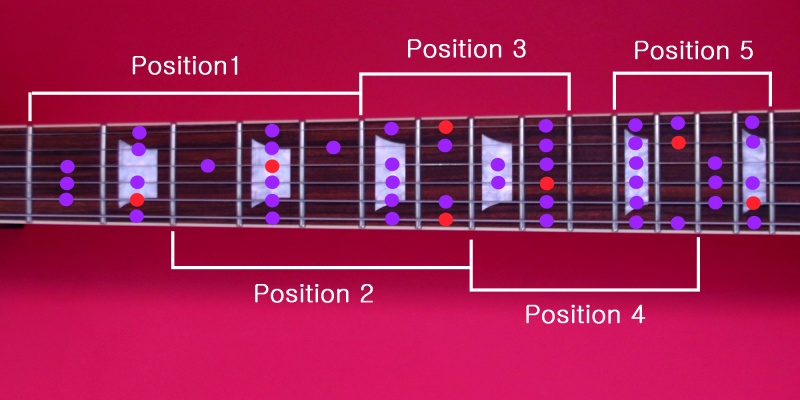 However, I have always found this to be quite limiting. What if I told you there was another way. One pattern to rule them all! Sort of. First I want to explain a little bit about how the strings are set up on a standard tuned guitar. EADGBE. This layout was created hundreds of years ago. The thing I want to draw your attention to is how each string is tuned in relation to the next one along. E to A. This is 5 semitones. A to D. Also 5 semitones. D to G. Again 5 semitones. Now for the oddity. G to B is 4 semitones. and finally B to E which is back to 5 semitones. Now this might not seem like much of a problem, and for barre chord playing it works really well. However, it does affect the way that we play scales. Being a geek, I wanted to now how the scales are formed all over the fretboard, and I found that there is a pattern that repeats. It goes a little like this _x_xx line 7 _x_xx line 6 _xx_x line 5 _xx_x line 4 x_x_x line 3 x_x_x line 2 x_x_x line 1 A word of caution. These lines do not represent any specific string. It is a pattern, purely and simply that can be moved around the fretboard and played starting with various lines and various strings depending on which scale you want to play and which MODE. The _ represents an unplayed fret. Now if you noticed, each line represents 5 semitones. This means that on strings 6,5,4 and 3 which start at the top edge of the fretboard, I can take this pattern and play sections of scales. All the major scales in all of the so called Modes (Ionian, dorian, phrygian, lydian etc). As an example here is the c major scale played in 3 positions. This first position uses lines 3, 4, 5 and 6 from our master pattern.  The second position uses lines 4, 5, 6 and 7 from our master pattern. 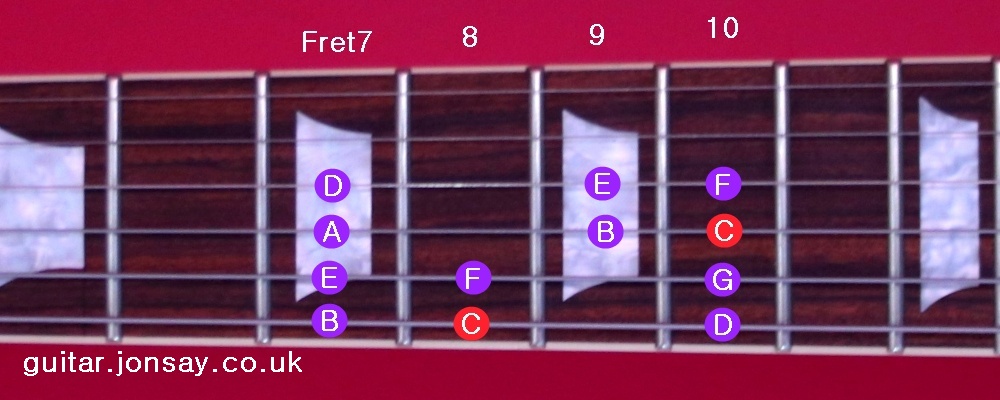 The third position uses lines 2, 3, 4 and 5 from our master pattern. 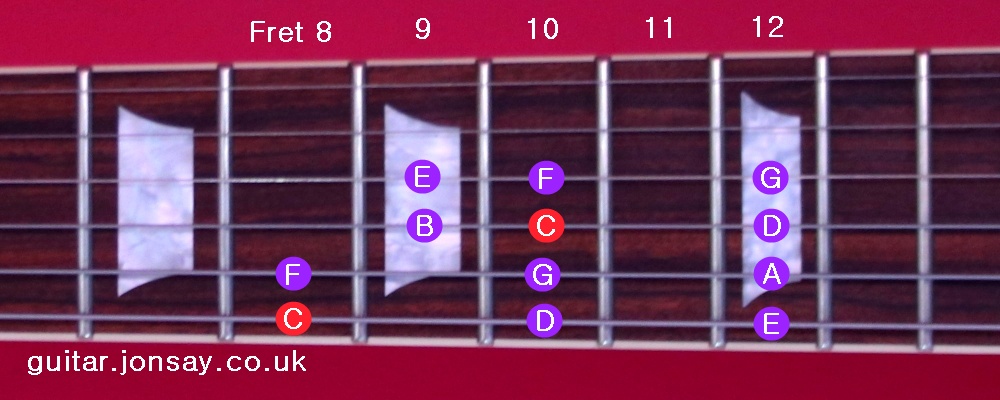 You might have noticed that I haven`t drawn the scale pattern on top of strings 1 and 2. The reason for this is that we have to do 1 simple thing first. Do you remember when I said that the G string and following B string were 4 semitones apart instead of 5 like all the other strings? Well the means that for my master scale to work, I have to move the pattern along the 2nd and 1st string towards the body of the guitar 1 fret. A better way to show this is if I place all the notes on the guitar to represent the chromatic scale. Playing the chromatic scale means to play all the notes A, A#, B, C, C#, D, D#, E, F, F#, G, G# and then back to the A. 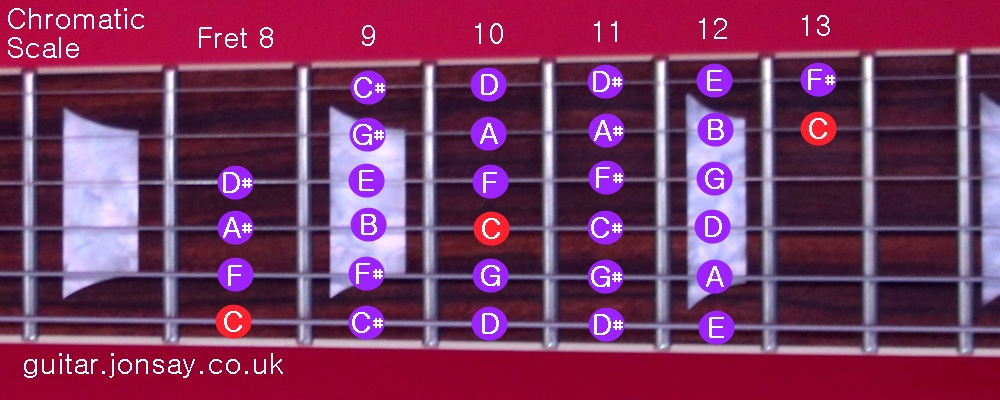 This shows how the strings 2 and 1 are actually tuned to the wrong notes to play a pure chromatic scale in one position. Before you say anything, they have to be tuned this was for normal chord playing. Barre chords are virtually impossible to play if the B string (string 2) became a C string, and the E string (string 1) was tuned to an F. This is one of the reasons that hundreds of years ago, musicians realized that the strings need tuning the way they are now. It doesn`t really matter that much, except we have to remember to move our pattern 1 fret toward the body when we play from string 3 to 2 and then we do the opposite and move 1 fret toward the neck when we play from string 2 to 3. The resulting master scale for C major looks like this at fret 8. 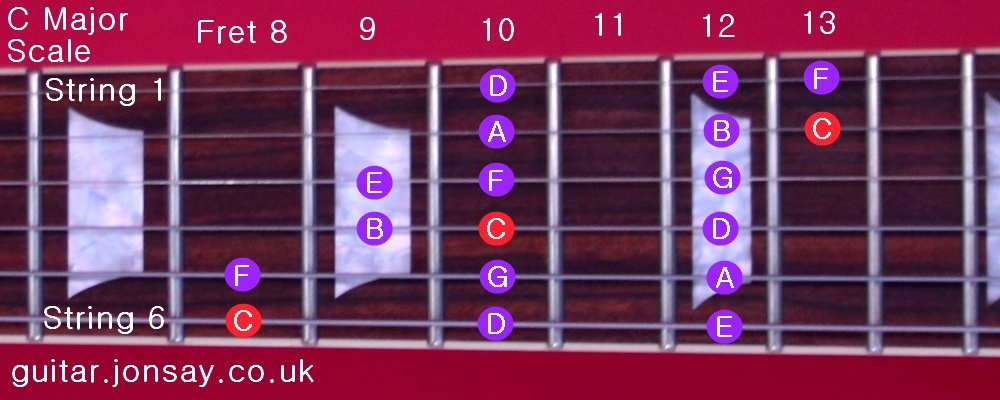 We start on string 6 using line 2 of the pattern. String 5 is line 3. String 4 is line 4. String 3 is line 5. String 2 moves to the body 1 fret and we play line 6. String 1 is in line with String 2 so we don`t move any more frets and then we play line 7. Now for the fun bit! Yey! The C major scale is played in the mode called Ionian. Maybe not so much fun. Okay, more of a useful trick. I can play the C Dorian scale by repositioning the scale. If I shift the whole pattern 2 frets towards the neck that is the C Dorian scale/mode. Simple right? 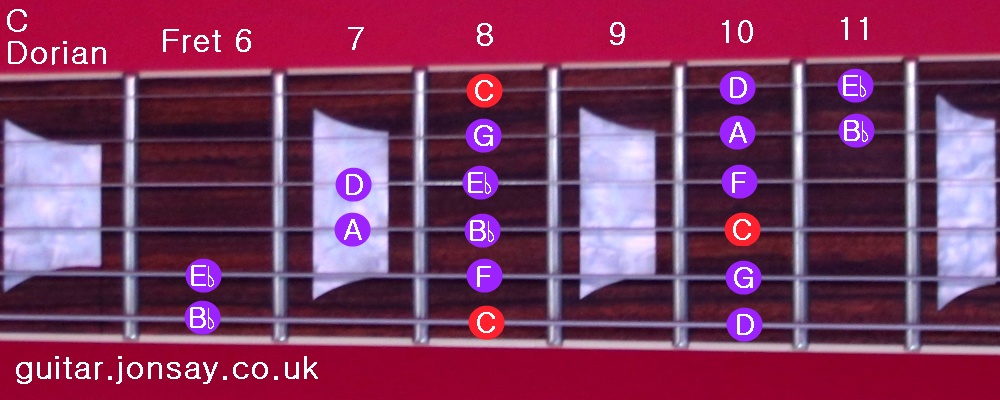 If I move the pattern 2 more frets I now get the C Phrygian scale/mode 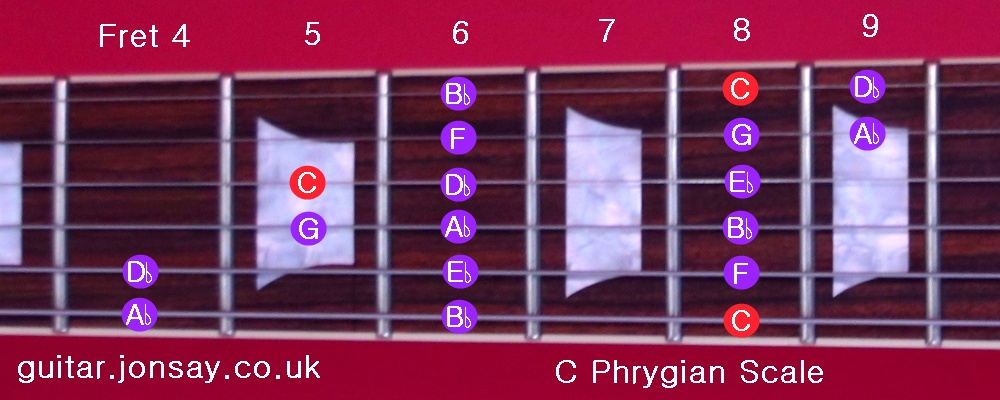 That concludes are first part of the master scale. If you are ready for the next part of my master scale lesson where we learn how to play all of the modes of all major and minor keys then click on Master Scale for Guitar Part 2 and good luck! All images are the copyright of jonsay.co.uk website designed by Jonathan Sayles |